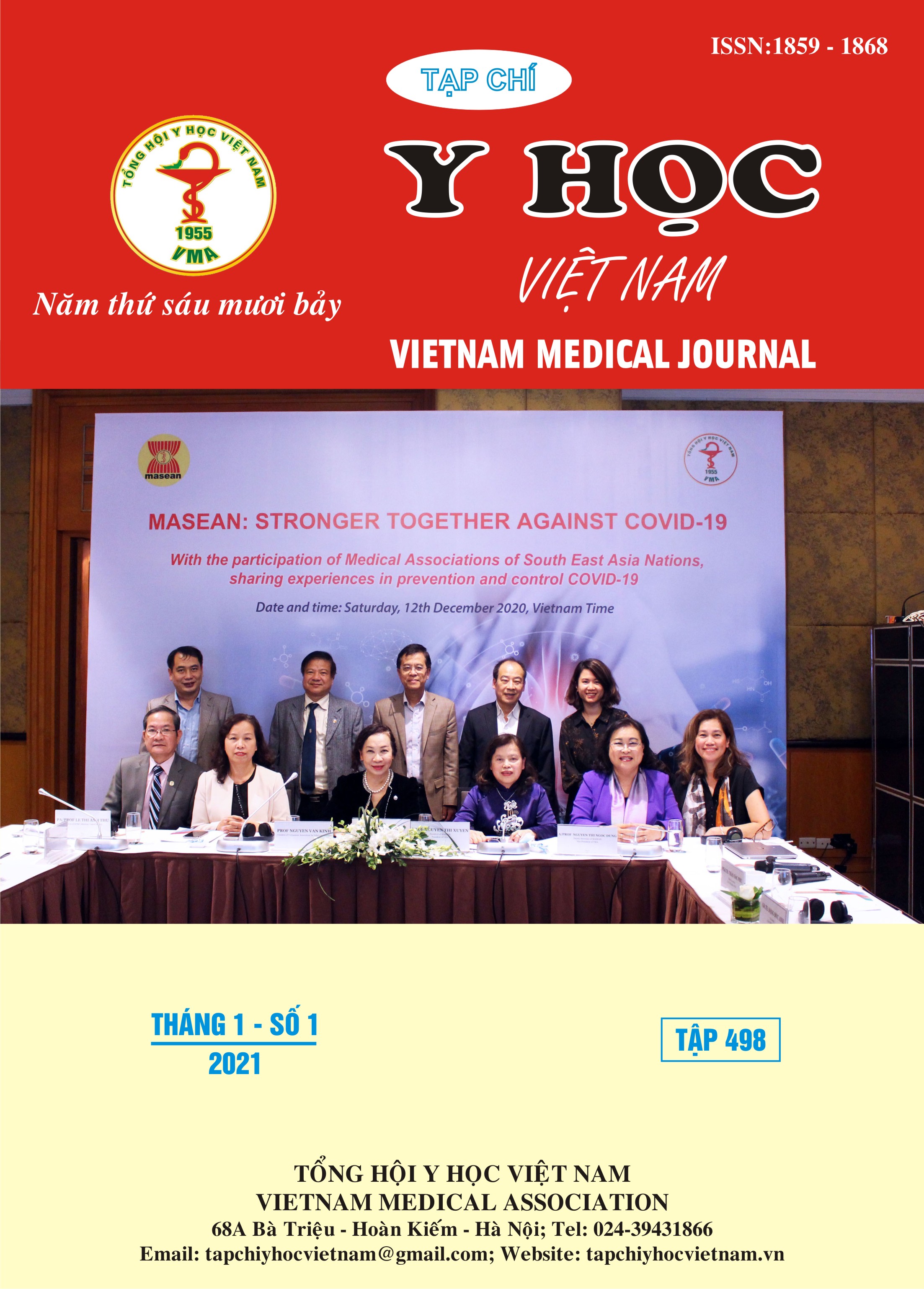SURVEILLANCE OF FACTORS RELATED TO SURGICAL INTERVENTION OF SEVERE POSTPARTUM HAEMORRHAGE IN VAGINAL DILIVERIES AT TU DU HOSPITAL
Main Article Content
Abstract
Objective: To investigate factors related to surgical intervention of severe postpartum haemorrhage in vaginal diliveries at Tu Du Hospital. Subjects and methods: Study a series of retrospective cases on 177 pregnant women with severe postpartum haemorrhage in vaginal diliveries at Tu Du hospital from August 1st, 2019 to December 30th, 2019. Results: Historical, clinical, and subclinical factors related to surgical intervention of severe postpartum haemorrhage in vaginal diliveries. Group of study subjects with pre-operative/postpartum blood loss of equl or more than 1500 ml increased surgery risk by 5.57 times compared with group with blood loss less than 1500 ml, this difference was statistically significant with p <0.05. Conclusion: Factors of gestational age, number of pregnancies, episiotomy, blood loss before surgery/postpartum were related to surgical intervention of severe postpartum haemorrhage in vaginal deliveries.
Article Details
Keywords
Surgical intervention, Severe postpartum haemorrhage in vaginal deliveries
References
2. WHO (1990). The Prevention and Management of Postpartum Haemorrhage. Report of a Technical Working Group, Geneva, 3–6 July, 1989. Geneva.
3. Trần Văn Vinh (2010). Tình hình băng huyết sau sinh tại Khoa phụ sản BV Đà Nẵng 2005- 2010. Tạp chí Phụ Sản, 8(2-3): 67- 71.
4. Văn Thị Kim Huệ, Trương Quang Vinh, Trần Thế Bình, et al. (2010). Điều trị băng huyết sau sinh. Tạp chí Phụ Sản, 8(1): 17-25.
5. Yan JY, Zhou ZM, Xu X, et al. (2014). Risk factors and surgical interventions associated with primary postpartum haemorrhage unresponsive to first-line therapies.J Obstet Gynaecol, 34(7): 588-92.
6. Grange J, Chatellier M, Chevé MT, et al.(2018). Predictors of failed intrauterine balloon tamponade for persistent postpartum hemorrhage after vaginal delivery. PLoS One., 13(10): e0206663.
7. Revert M, Cottenet J, Raynal P, et al. (2017). Intrauterine balloon tamponade for management of severe postpartum haemorrhage in a perinatal network: a prospective cohort study. BJOG.
8. Mousa HA, Cording V, Alfirevic Z (2008). Risk factors and interventions associated with major primary postpartum hemorrhage unresponsive to first-line conventional therapy. Acta Obstet Gynecol Scand, 87(6): 652-61.


